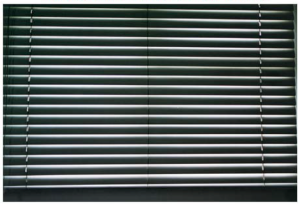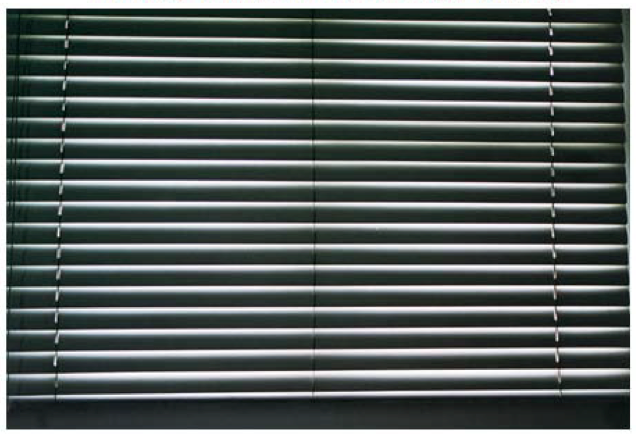Updated on April 24, 2024
The Window Activity
This strategy is great for all content areas from kinder to college. It combines visual and empathy (affective) to make strong connections to the content area. The strategy focuses on descriptive writing and sensory details. Students write for 2-10 minutes depending on the step. The suggested times below can be adjusted to best fit your learner environment. Read on to get a copy of the resource guide.
Step One: Introduction
Directions: Imagine that you are in an empty room. The only light comes from through the closed blinds of the only window in the room.
Step Two: Brainstorming
Directions: The blinds rise as you step to the closed window. Pressing your face to the thick glass you witness what’s happening in the scene. Describe what you see using many details.
Explanation: Have students do a Fastwrite. Pen/pencil to paper, students write with NO stopping. Write whatever comes to mind. Brainstorm. May write in any format of student’s choosing, such as list of words or narrative writing. If stuck for words, the participant writes a Trigger phrase until more ideas come. Trigger phrases are related to the picture and concept, e.g. Sacrifice, Family conflict.
Step Three: Communicating through the senses
Directions: Now the window opens allowing sounds to filter in. A breeze caries smells, and perhaps taste and texture (touch) to you.
Explanation: Have students do a freewrite Students pause, reflect, and then write. They can stop to think as often as needed. Results may be a narrative or list. Emphasize use of sensory details OTHER than sight descriptions. Advanced writers might try to include several taste or touch details.
Step Four: Becoming part of the scene
Directions: Suddenly, you found yourself moving through the window and into the scene itself. Choose a role and describe the emotions or feelings of the event. Must write in narrative format.
Resource Guide and an Invitation to Write
Here is a pdf handout with the directions and visuals for the Window activity in this link and a video version,
What follows is an example that I encourage you to experience for yourself. Try the writing exercise after each step. It’ll help you understand the anxiety and the benefits. Let’s begin…
Focus of activity: Celebrating Independence Day
Driving Question: How might rituals for celebration (like Independence Day) strengthen a community or nation?
Step One: Introduction
You are in an empty room. It has no door. The only light comes through the blinds of a single window. In a moment, I will raise the blinds so that through the closed window you will see a scene. Be ready to study the scene.
Step Two: Brainstorming
I’m going to raise the blind. When I do, study the picture…
Describe what you see. If you run out of ideas from one part of the scene, look at a different section of the picture and continue to add details to your description.
Use the Fastwrite approach
Write without stopping–pen to paper or fingers to keyboard. Set timer for 4 minutes. Start it and write. If you get stuck on an idea, look at a different part of the picture for more detail ideas. While you look repeatedly write the word: rituals.
For this activity, rituals is the trigger word. A trigger word relates to the theme or a concept of the activity or project that keeps students thinking about the reason behind the work.
Study the picture below,
start the 4 minute timer,..
and begin writing…Now…
Insert picture through a window.
Step Three: Communicating through the Senses
I’m going to open the window. This lets in the breeze and other senses. Describe details in the picture using sensory details: sound, smell, taste, touch, and sight. Try to use mostly the senses other than sight where possible. If you like a challenge, try to include many taste details (Note: taste sense is closely related to smell details).
Use the Freewrite approach
You may take pauses during writing to think about how you want to choose words for the sensory detail. Set timer for 6-8 minutes.
Study the picture below
start the 6-8 minute timer,…
and begin writing…Now…
Step Four: Becoming part of the scene
You are being transported through the window and into the scene. Choose your location and role. Write in narrative format as if you are part of the scene. Use sensory details as part of your narrative. Writing in 1st person perspective is recommended. You may use fast or freewrite format for 5-10 minutes.
Study the picture below…
start the 5-10 minute timer,…
and begin writing…Now…
The next step is to have participants share their 2nd or 3rd writing piece with 1-3 others. The expressions of pleased surprise at the quality of the writing is common. I never get tired of seeing people having the epiphany that they can write better than they thought.
Please post your writing from step 3 or 4 in the comment section below. It will be great to see what you craft, and how you might use this with others. The excitement and confidence in writing that this activity generates is exactly how Sally Jessup (RIP 2012) had intended. So lets inspire others to discover the writer inside them.
Here again is the pdf handout with the directions and visuals for the Window activity in this link and a video version,
Permission to reprint, retain, and redistribute this article for educational purposes.
The Origin and an Inspiration for the Window Activity: Sally Jessup
The Window activity was taught to me by Sally Jessup, my close friend and colleague. She had a gift for recognizing in others a capacity that they did not always see in themselves. The Window activity, as she designed it, is a powerful tool for inspiring writing in all people. She understood that writing skills are a constant struggle that many people grapple with, primarily because of their own negative self perceptions regarding their capacity. To understand the value of the Window activity, context is needed regarding the complex challenges that remain mostly uncovered in education.
Writing is a challenge for students. The writing process, particularly revision and reflection, is the elephant in every classroom from Kinder to college. Most teachers say that students need to use the writing process to become skillful writers, but few take the time to teach the craft, or do not know how. Through my teaching career, I’ve discovered that many students do not see themselves as good writers. For some, the fear of writing is nearly phobic.
A further complication is that many teachers who teach writing may have a lesser interest in writing for themselves or do not view themselves as writers. During some of the workshops I facilitate, I survey the staff: “Raise your hand if you view yourself as a writer?” The number of raised hands has been consistent: 10% or less.
When I worked on my Masters in English, I’d taught three years as a History teacher. Early on my graded papers were returned drenched in red inked corrections. This discovery that my writing was not as good as I thought was sobering. I’m thankful to those professors who (with extended patience) helped me realize I had work to do, and then when I showed a desire to improve–I was going to become an English teacher after all–they set me on a path towards lifelong development of my writing. Disclaimer: the red ink drenching worked for me but could shut down others.
That graduate school experience startled me with an epiphany that has stayed with me ever since: Writing is a muscle that gets stronger with thoughtful practice. Without development or usage, writing skills atrophy. The good news is that it’s never too late to improve one’s writing. Great writers are not born (sorry Stephen King), they work relentlessly and thoughtfully at their craft.
Sally Jessup understood the need for thoughtful practice. She also understood that writing needed to be purposeful and engaging. The Window activity provided the opportunity for all of these factors. A value added is that the Window activity opens conversations with students to mediate their negative self-perceptions as a writer.








Thank you so much for sharing this activity!
I’m glad you find it helpful. It’s a great activity.
I was so impressed by this activity that I have started a creative writing club at school. I am a math and science teacher and this will help a bunch, bring out the creativity in us all. Thanks for sharing!
Glad you like the Window Activity. It can engage the inner writer in everyone. Also, think about how you might use this to launch a Science unit. It’ll get your students deeply connected to the topic.
What a brilliant strategy for all learning styles (actually three strategies). In my writing classes, I begin with the premise that people constantly–in their minds. My mantra from Day 1 in a writing class is that we must “make the invisible visible” (a phrase from Cris Tovani’s work). Your Window Activity embodies and affirms that notion–and so much more. LOVE it. Thank you for generously sharing your work. I’m tickled I stumbled on this site.
This is a great activity, and not just for an English (writing) class. It’s important for students to observe what they see, imagine what they would feel, and put themselves into a scene. The ramifications of putting yourself there–identifying with someone in the photo– can be huge! I use something similar in my Spanish classes, where I give the students a painting to look at and they may either write about the scene in general, description; write about what is happening from the point of view of someone in the scene; or write themselves into the scene and write in first person. Most students opt to just describe it, but it gives other options to the more creative students.
Hi Deborah,
I’m glad you found value in the strategy. It’s a good way to help students find writing appealing. 🙂